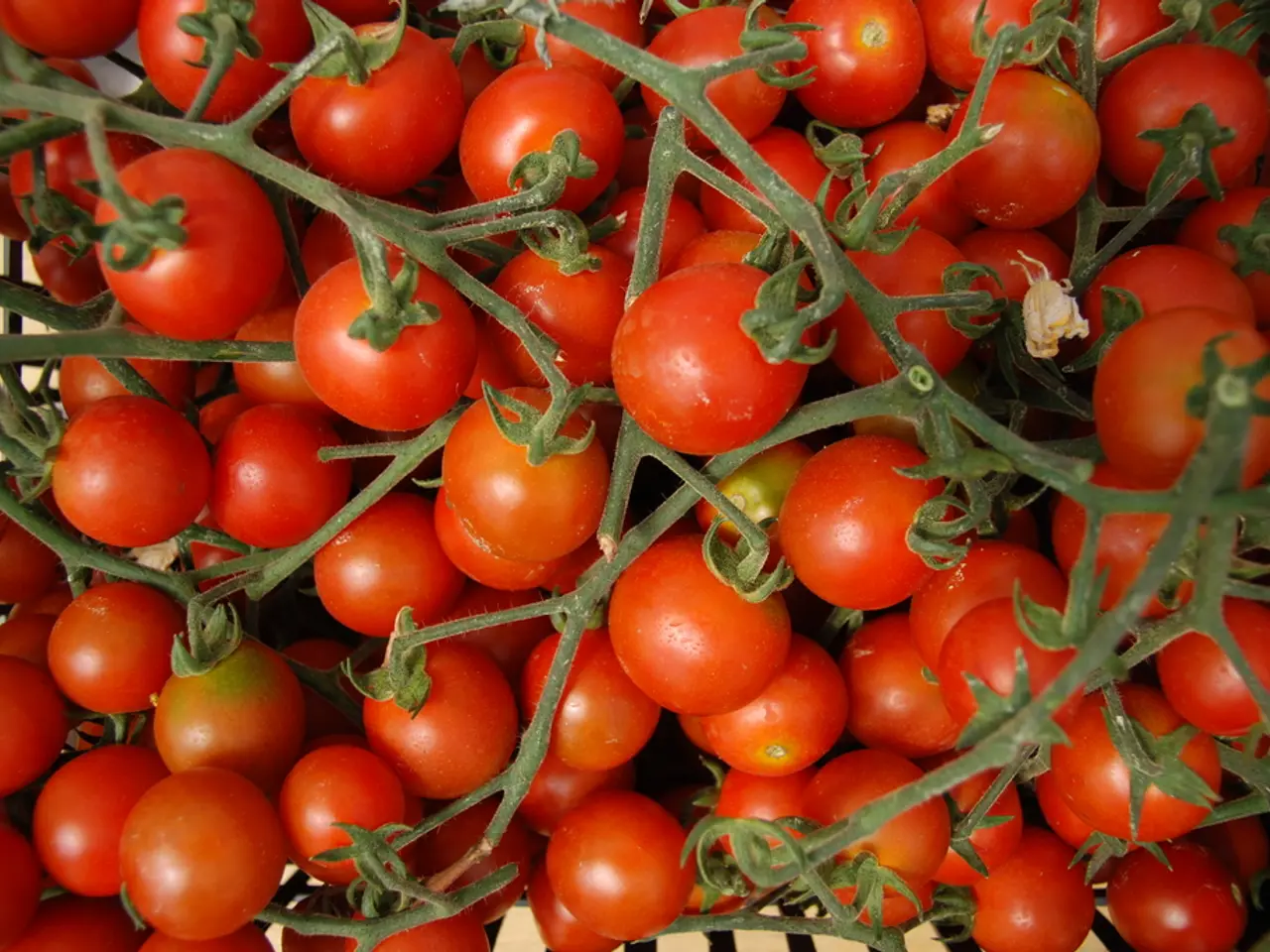Awareness of Common Tomato Ailments for Gardeners - plus Methods for Their Remedy
In the world of gardening, maintaining healthy tomato plants is essential for a bountiful harvest. However, one common threat to these vibrant plants is Fusarium wilt, a soil-borne fungal disease that can cause significant damage.
Causes
Fusarium wilt in tomatoes is caused by the fungus Fusarium oxysporum f.sp. lycopersici. Infection occurs through rootlets, often carried in soil. There are three main races of the pathogen affecting tomatoes: Race 1 is widespread, Race 2 is common in some valleys of California, and Race 3 is spreading. Fungal spores thrive in soil and infect plants under favorable conditions.
Symptoms
Early signs of Fusarium wilt include stunted growth, with plants not reaching their normal height. Leaves and branches yellow and wilt, sometimes only on one side or branch, known as the “yellow flag effect.” Symptoms typically start with wilting during hot parts of the day. Fruit production is reduced, and fruits may be smaller or malformed. Eventually, infected plants usually die. No visible lesions appear at the base of the plant's stem, unlike other diseases like southern blight.
Control Methods
Preventing Fusarium wilt relies on several strategies. Removing infected plants promptly can help prevent the spread. Soil sanitation, such as cleansing or solarizing the soil, can reduce the fungal load. Using resistant or tolerant tomato varieties is also recommended, as breeding for resistance is ongoing. Crop rotation with non-host plants can also reduce soil inoculum. Improving airflow around plants by pruning and spacing, watering at the base of plants, and mulching can help reduce the conditions favorable for fungal growth. Fungicides may be used, although control is mostly cultural and preventive. Destroy severely affected plants to protect the rest of the crop.
In addition to Fusarium wilt, tomato plants can be affected by other diseases such as bacterial wilt, tomato spotted wilt, southern blight, curly top, bacterial spot, anthracnose, early blight, and bacterial canker. Identifying symptoms and differences between infectious and non-infectious diseases is crucial for controlling tomato plant diseases.
While there is no cure for Fusarium wilt, implementing these control methods can help limit its progression. A vigilant gardener is the best defense against these potential threats to tomato production.
Maintaining a vigilant lifestyle in home-and-garden activities is crucial for preventing soil-borne diseases like Fusarium wilt, particularly in tomato plants. Regularly inspecting your tomato plants for early signs of wilt, such as stunted growth, yellowing leaves, and reduced fruit production, can help you take prompt action and protect your crop.




